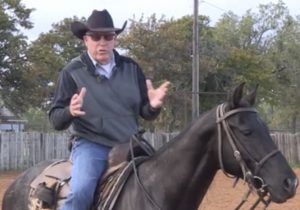
Todd Crawford, NRCHA Hall of Fame member and $2.7 million earner.
It may seem counter intuitive, but top trainer Todd Crawford teaches his horses to stop by teaching them how to run.
“I believe the stop is all about how well you can run. If you don’t run well your chances of stopping certainly diminish,” Todd Crawford said. “I practice running more than I practice stopping,” the Hall Of Fame and $2.7 million earner said.
Crawford has mentored many of the current top open riders. He won the 2006 Snaffle Bit Futurity. He operates his training operation in Blanchard, Oklahoma.
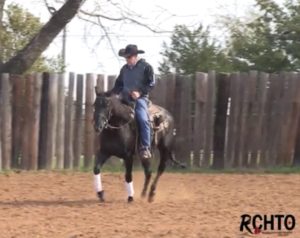
“What I find a lot of non-pros do, if that corner wasn’t right they would still continue down and run for the stop. I want every part of my run to be responsive before I try to tackle the stop. Again I’m working more on the run than the stop.”
Crawford explains how he works on the rundown to improve the stop. It’s about how the horse travels and carries itself around the whole arena, especially through the corners. He stresses the importance of making sure they are not on the forehand or crooked as they travel because they need to be stopping straight and on the hindquarters.
Warm Up Exercise
First thing when warming up, Crawford will ride in an hourglass figure around the arena. Crawford is trying to make sure he has the horse straight and listening to his legs and hands. The horse cannot be leaning on either leg. He does this exercise at the trot and the lope.
For the exercise, think about moving the horse’s front end up to the outside and move the hip to the inside on the diagonal part of the hourglass.
“[This exercise] gets my horse prepared to move as we’re running…”
One of the first steps to a good stop is the run down and the rundown starts with the corner (see diagram).
If the horse doesn’t make the corner well, you start off leaning and then the run deteriorates from there Crawford said. The chin, shoulder and hip need to line up. He will trot and lope the hourglass figure to practice his corners.
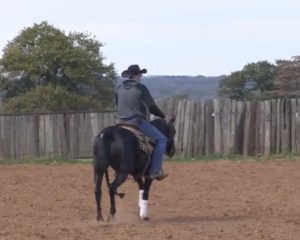
“When I use my outside leg, I want [the horse] to move over and go forward.”
“When I use my outside leg, I want [the horse] to move over and go forward.”
After Crawford has a good feel of the horse in the hourglass shape he will do the rundown. He won’t stop the horse hard as he is mainly testing all of the parts that make up a good stop. Problem Solving When Crawford executes a run down, he makes sure the horse feels straight and each body part is where he wants it. If it is not, or if the horse is on the forehand and stopping in a heap, he will school the horse and fix the lean or whatever issues and then try the run down again. There should be no deviating, the whole body should be running in a straight line. Crawford also said that straightness is one of the hardest things to teach.
“The more I have it on my horse prior to showing, the less time it takes schooling.”
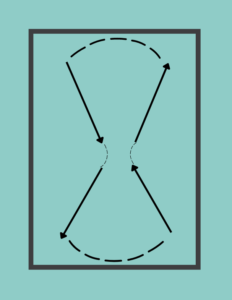
Crawford uses an hour glass shape to school the corners and practice body control.
Crawford cautioned against kicking and pulling after a poorly executed stop saying, “I believe that almost gets
them guarded against stopping versus wanting to stop. It probably takes me a little longer to get that done. I believe in the end it gets them to want to stop stronger.”
The rundown needs to be controlled and moving with purpose not just turning the corner and taking off.
“[If they take off] I’m not going to try to stop them, I’m going to try to relax the run.”
Crawford talks about bumping up the speed gradually in the rundown. He advised breaking the arena into fifths, so you have first gear, second gear, third gear, fourth gear and then the stop.
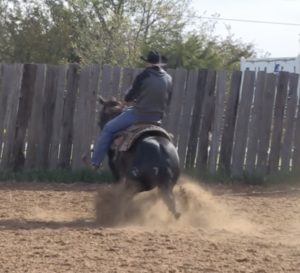
After a few schooling rundown sessions, the horse stops straight and correct earning a big release.
“Once they hit runoff speed, there’s no ability to accelerate, they start slowing down.”
And slowing down to the stop does not produce a good stop, it produces a horse that leans and goes on the forehand and stops in a heap. Things to remember Crawford pointed out a quote that sticks with him from a reiner friend, “I want the horse to run with courage.”
When the horse stops well, give a big release or break. A good stop means the horse doesn’t fall out of its lead, stays up (off forehand) and slides.
➤ Click here to watch Todd Crawford demonstrating this technique
